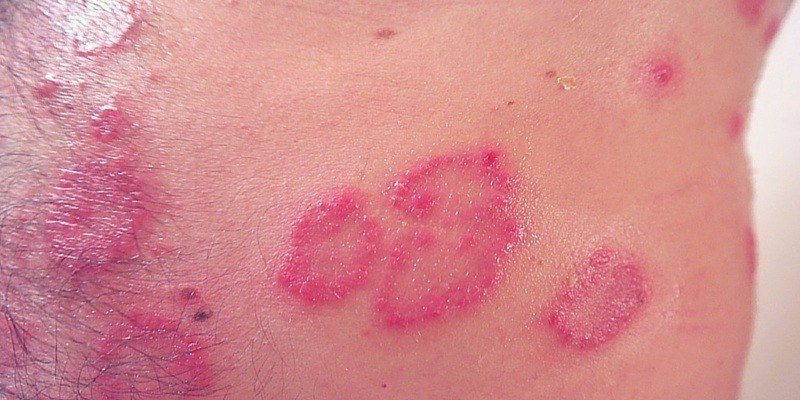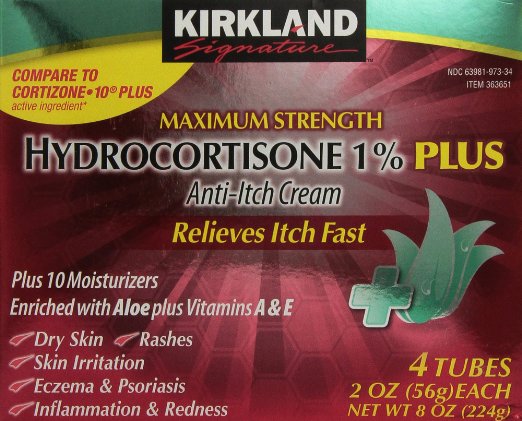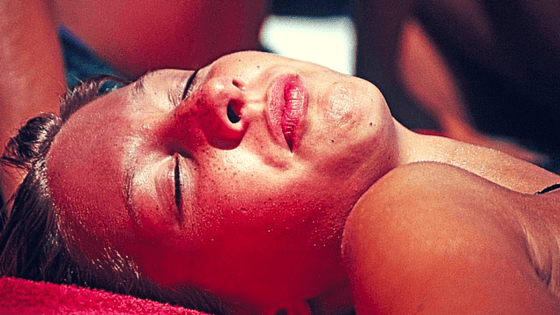Eczema is a skin condition that affects hundreds of millions of people around the world so don’t feel like you’re alone if you’re struggling with it. It’s a lot more common than you think.
Our goal here is to help you get your eczema under control and to improve the quality of your skin. At the very least, we’ll help you make it manageable and we promise you’ll see some improvement as long as you apply what you learn in this guide.
First it helps understanding what eczema is in the first place so you know what you’re dealing with. It’s also commonly known by the name of dermatitis and it’s actually a catch all term for a number of annoying skin conditions that can all be best described as a bad rash.
Even though eczema might look a little different from one person to another, the most common symptoms shared by pretty much everyone are the following:
- Itchiness
- Dryness
- Swelling
- Irritation
If it looks like you have reddish pink patches scattered throughout your body, or like you’ve rolled your skin through a field of poison ivy, then it’s likely eczema.
These patches can either be contained to a small area or cover a large portion of your skin. The most common problem areas for people are their arms (especially around the elbows), their legs (around the knees), their hands, and neck.
Some of these areas are less desirable than others and it certainly isn’t doing you any favors if you’re trying to look your very best. Clear, healthy skin is the ideal we’re trying to achieve so let’s put down eczema once and for all!
Types of Eczema
In order to treat it effectively, it’s helpful to know the specific type of eczema you have. Here are the most common types:
Atopic Dermatitis is the most severe variety and also the longest lasting and most painful. If you have this type you likely had it since you were young. It’s believed to be genetically inherited and it falls into a similar category of other atopic diseases like asthma and hay fever.
Contact Dermatitis comes from a specific allergic reaction when you come into contact with a substance that inflames your skin. If you can figure out what’s causing your skin the irritation, you can avoid having to deal with any problems. We listed some common triggers which can help you narrow down the culprit(s) further below.
Seborrheic Dermatitis first pops up on your scalp and then sometimes spreads down to the rest of your face and neck. It’s usually compared to a more severe form of dandruff and it’s thought to be caused by an abnormal reaction to a yeast that’s found on your skin. Knowing this will help us treat it!
Nummular Eczema looks a bit different than the other types, with large, scaly, circular patches that tend to be a little harder to treat. Its causes are unknown but we do know it’s likely not genetic and it can occur at any age. It also seems to be more common in women than in men.
There are also forms of eczema that are more common on infants but we’re not covering those in this guide — we’re strictly concerned with adolescent and adult eczema and improving the quality of your skin to look better.
Skincare Routine For Eczema
Since eczema is an allergic reaction, depending on the type you have you might have found that it pops in and out of your life and at a different severity. Mild eczema is pretty manageable but more severe forms can have you itching your skin until you bleed. This is bad! If it gets to that point you’d want to see a doctor pronto.
People with dry skin are more likely to suffer with stronger forms of eczema so you’ll want to follow a routine designed for dry skin types to best serve your skin’s needs. One of the most important things to look out for with dry skin is to avoid anything with harsh or irritating ingredients that will further aggravate your dermatitis. Dry skin needs to be gently treated because it tends to be sensitive and we took that into account while creating the routine.
The key part of your skin care regimen will be moisturizing. Hydrated skin is less likely to get irritated and it helps make the itchiness more manageable so you don’t worsen the condition further. We talk more about how you can use a quality moisturizer or cream to reduce the symptoms of eczema further below.
Common Eczema Triggers to Avoid
Avoiding allergens and other irritating substances can help you prevent eczema from worsening or flaring up in the first place. This is especially true for those with contact dermatitis who have skin that doesn’t really get along with one or more of the items listed below.
Soaps, Detergents, Shampoos, & Dishwashing Liquids
Most use very harsh ingredients that irritate and mess up the pH balance of your skin. Soaps and detergents in particular are way too strong and hover around a 9 or above on the pH scale while you want something closer to a 6 and below.
This is also why it’s so important for you to avoid skin care products that contain fragrances, ethyl alcohol, lanolin, and certain essential oils which can all further inflame sensitive skin. We talk more about the ingredients you should look out for here.
Fragrances
For similar reasons as mentioned above, you might want to think twice about spraying on some perfume or cologne if your skin is easily irritated. Fragrances contain essential oils and ethyl alcohol which are both no-no’s for eczema.
Rough Fabrics
Wool, polyester and other synthetic materials can brush up against your skin and worsen its condition. Looser fitting clothing and soft cotton is ideal. And if you find the tag annoying cut that off too.
Weather
Any extremes in weather will cause you problems. In cold weather your skin dries out and can begin cracking or getting flaky which will make you want to itch even more. It’s very important for you to moisturize in colder weather and not just your face but the problem areas on your body too.
Hot weather and humid air isn’t much better because heat also dries and sucks any moisture right off your skin. For similar reasons, the heater in your home could be causing you problems. You might want to look into getting a humidifier if you’re indoors a lot because it’ll help add some moisture back into the air which will help manage any irritation.
At the same time, you don’t want air that’s too humid either. Both very dry and very humid air is bad. You want something in the middle.
Showers
Don’t use hot water! Use mild or lukewarm water and moisturize IMMEDIATELY after you get out to retain moisture on your skin. A good cream or body lotion can soothe your skin and also rehydrate it after a drying shower. We talk about some good ones in the ‘Treatments’ section below. By the way, isn’t it weird how water makes things dry? We’ve spent way too much time thinking about that.
Common Allergens
Are you allergic to any of the following?
- House Pets?
- Molds?
- Pollens?
- Fungi?
All of them can be causing your eczema to flare up. Not good! Keep your home clean, vacuum consistently, and consider getting rid of any heavy carpets to save you some time cleaning. Carpets are like magnets for allergens.
Foods
Food allergies can make eczema worse. The three you should look out for are nuts, dairy, and wheat. You probably already know if you’re allergic but you should try staying away from those three even if you’re not just in case.
Taking a month off from each is a long enough time to determine if your eczema is related to them. Try experimenting with removing food groups one at a time to see if they have any effect.
Eczema Treatment Options
Topical Corticosteroids
The most common corticosteroid used to treat eczema is cortisone. We talked a bit about cortisone in our acne treatments guide as a method to treat post-inflammatory hyperpigmentation. Cortisone’s anti-inflammatory effect on skin is also very valuable for treating eczema symptoms.
Cortisone comes in a variety of forms including lotions, ointments, and creams and at various strengths. If getting a prescription, your doctor will decide what strength is right for you.
You can also buy a cortisone cream yourself although they tend to be less powerful than the prescription brands. You may have seen products called “hydrocortisone” at your local drug store. They’re one of the most commonly used and safest types of cortisone used to treat skin related inflammation.
Kirkland Hydrocortisone 1% Cream
Apply the cream when your eczema flares up or you get really itchy. It will help control the inflammation and reduce symptoms. Although cortisone is safe, some people might experience an allergic reaction that will seem to make the eczema worse rather than better. If this is you, you should stop treatment and look at the other options we talk about below.
Note: Cortisone isn’t the traditional type of steroid most people think of. Those are anabolic steroids which help people build muscle. Corticosteroids are different and don’t have any of the side effects of “traditional” steroids.
Topical Calcineurin Inhibitors (TCI’s)
TCI’s are also applied directly to the skin except they don’t contain any type of steroid. Like corticosteroids, they help treat the rash and have minimal side effects for the most part although there is a catch.
The two major brands here are Elidel and Protopic both of which require a prescription. Protopic comes in two strengths .1% and .03% which can treat your eczema depending on its severity. In general, Elidel and Protopic are usually prescribed for more severe types of eczema.
There have been safety concerns which you can search into but they are generally deemed as “safe” (again consult your doctor first).
Phototherapy
During phototherapy, a trained specialist will use UVB rays emitted from a machine to help treat your symptoms. Research has shown that UV light can help reduce the itchiness, and may have some anti-inflammatory effects on eczema infected skin.
If you’ve read our article asking whether tanning was really worth it, you know that UVB rays are generally safer than UVA which are the type most responsible for long-term skin damage like wrinkles and saggy skin.
hat’s not to say UVB rays are completely safe and great for you but they will help increase your Vitamin D levels as an added benefit and they won’t do as much damage on their own.
Sometimes UVA rays are used and combined with a medicine called Psoralen which increases your skin’s sensitivity to light. This is known as a PUVA treatment and is generally used for more severe and chronic forms of eczema. When the area affected is contained and topical treatments aren’t doing anything for you, phototherapy should be the next thing to try.
Some of the downsides to using phototherapy is that it requires multiple sessions, a time commitment, and is generally more expensive than the other treatments we talked about above.
That’s not even counting the long-term effects that repeated UV exposure will have on your skin. In this case you may want to sacrifice some photoaging in exchange for less eczema but that’s a decision you have to make for yourself.
Try the less expensive topical treatments before you resort to phototherapy. Phototherapy does work but you have to ask yourself if it’s worth the sacrifice (time, money, and photoaging).
Quick Recap
- Follow a dry skin care routine. This will help you manage sensitive skin.
- Moisturize. A lot. Especially in cold weather and after a shower or bath.
- Don’t itch too much! This will make your skin worse.
- Avoid the common triggers (cleaning products, allergens, heat, fragrances, etc.)
- Try the different, safer topical treatments. If those don’t work try TCI’s and then Phototherapy.
That concludes our guide on treating eczema (dermatitis). Please share the post if you found it useful!





